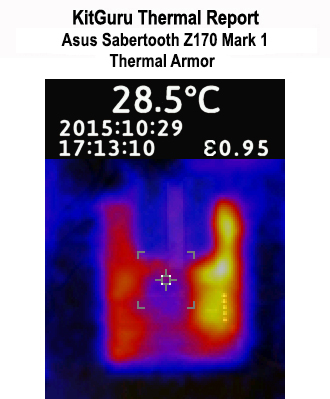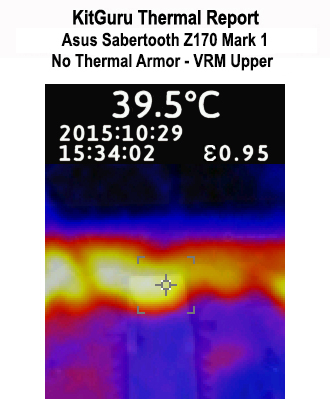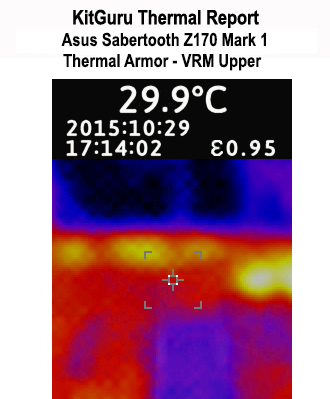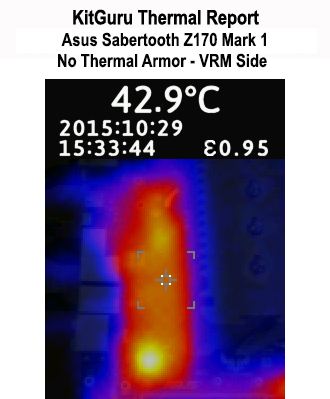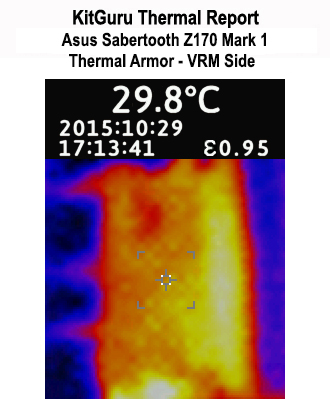We looked at the performance of Asus' Sabertooth Z170 Mark 1 motherboard through a thermal imaging camera.
For this process, the i7-6700K was overclocked to 4.8GHz using a core voltage of 1.4V so that we could push a large amount of power (therefore heat) through the VRM components. Our test system's Noctua NH-D14 CPU cooler was used and we relied upon the onboard GPU so that an add-in graphics card did not affect the displayed readings.
Note: The temperature reading displayed is the temperature at the point on which the camera cross-hairs is focusing. Therefore, lower temperature does not necessarily mean better performance – the coloured heat map should also be examined.
Side-by-side images of the Sabertooth Z170 Mark 1 motherboard with its Thermal Armor attached and with it removed show how the heat spread differs between the configurations. Thermal Armor helps to mask heat from our thermal imaging camera, implying that it is serving its function of segregating motherboard heat from that of other components (namely PCIe devices).
Note how the focus point on the Thermal Armor image is a significantly lower temperature than that of the no Thermal Armor image. This shows how the 35mm ‘northbridge' fan forces cool air beneath the plastic shield.
That hot-spot in the upper-right corner of the Thermal Armor equipped configuration is hot air being dumped out of the VRM cooling chamber onto the upper edge of memory modules. When installed inside a chassis, roof-mounted exhaust fans should help to remove this heat.
Looking at the VRM area shows how Thermal Armor continues to constrict the VRM circuitry heat to within its plastic shield. This allows the 40mm rear IO fan to blow cool air directly across the VRM heatsink and flush the thermal energy.
Preventing the VRM circuitry heat from rising up onto the underside of an air CPU heatsink may provide benefits in the form of enhanced processor cooling performance (albeit slightly).
The same trend is shown when examining the side VRM area. Thermal Armor does a solid job at segregating the heat-producing sources in important locations (such as around the VRM components).
 KitGuru KitGuru.net – Tech News | Hardware News | Hardware Reviews | IOS | Mobile | Gaming | Graphics Cards
KitGuru KitGuru.net – Tech News | Hardware News | Hardware Reviews | IOS | Mobile | Gaming | Graphics Cards



